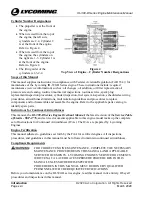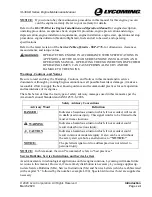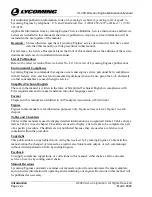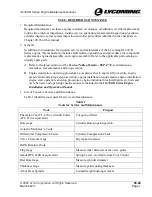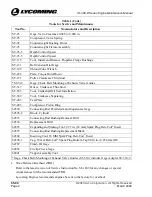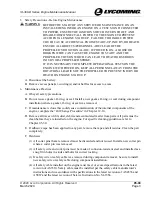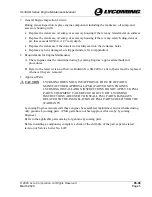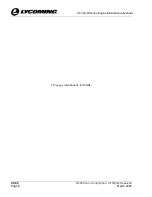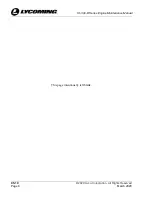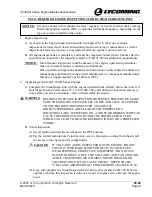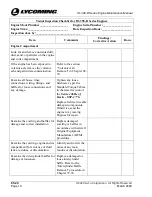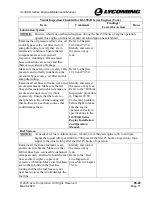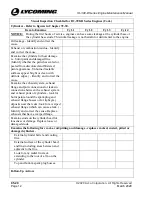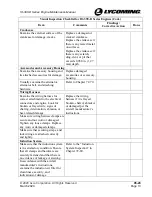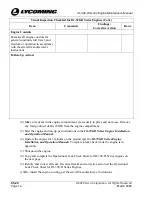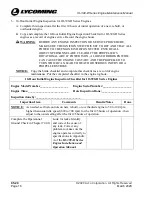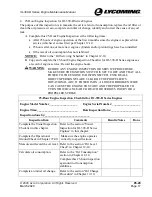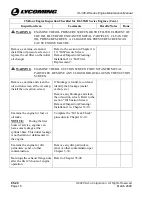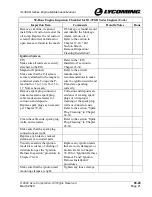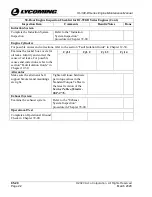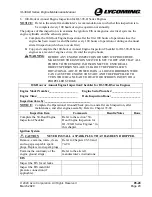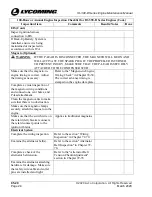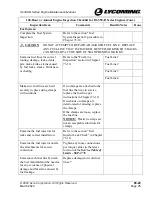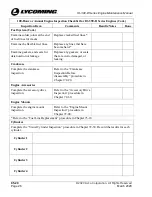
IO-390-D Series Engine Maintenance Manual
© 2020 Avco Corporation. All Rights Reserved
05-20
March 2020
Page 11
IO-390-D Series Engine Maintenance Manual
Visual Inspection Checklist for IO-390-D Series Engines (Cont.)
Item
Comments
Findings/
Corrective Action
Done
Lubrication System
NOTICE:
On new, rebuilt, or overhauled engines, during the first 50 hours of engine operation,
operate this engine on mineral oil until oil consumption has stabilized.
Examine the oil pressure relief valve, oil
cooler bypass valve, oil filter and oil
sump drain plug to verify they are in
satisfactory condition. Ensure that all
components are secure on their
respective mountings, all associated
hose connections are secure and that
there is no evidence of leakage.
Refer to Chapters
12-10 and 72-50.
Identify and correct
the cause of any
leak.
Make sure the safety wire or safety cable
is secure and correctly installed on the
oil cooler bypass valve, oil filter and oil
sump drain plug.
Refer to Chapters
12-10 and 72-50.
Examine all oil lines for leaks, wear, and
secure attachment. Make sure that all
lines and associated cushion clamps are
secure and cannot move or vibrate
excessively. Ensure that there are no
sharp bends in the oil line routing and
that no lines are near heat sources that
could damage them.
Identify and correct
the cause of any leak.
Refer to the “Oil Line
Inspection” procedure
in Chapter 72-50.
Correct any problem
before flight to make
sure the engine
operates correctly to
specifications in the
IO-390-D Series
Engine Installation
and Operation
Manual.
Fuel System
NOTICE:
As needed, set fuel controls on new, rebuilt, or overhauled engine to 50 to 100 rpm
higher than usual idle speed (600 to 700 rpm) for the first 25 hours of operation - then
adjust to the usual setting after the first 25 hours of operation.
Examine all fuel lines for leaks, wear,
and secure attachment. Make sure that
all fuel lines have serviceable cushioned
clamps securely attached to hold the fuel
lines securely in place to prevent
excessive vibration. Make sure that there
are no sharp bends in the fuel line
routing and that the fuel lines are not
near heat sources that could damage the
fuel line.
Identify and correct
the cause of any
leak.
Refer to the “Fuel
Line Inspection”
procedure in Chapter
73-10.


